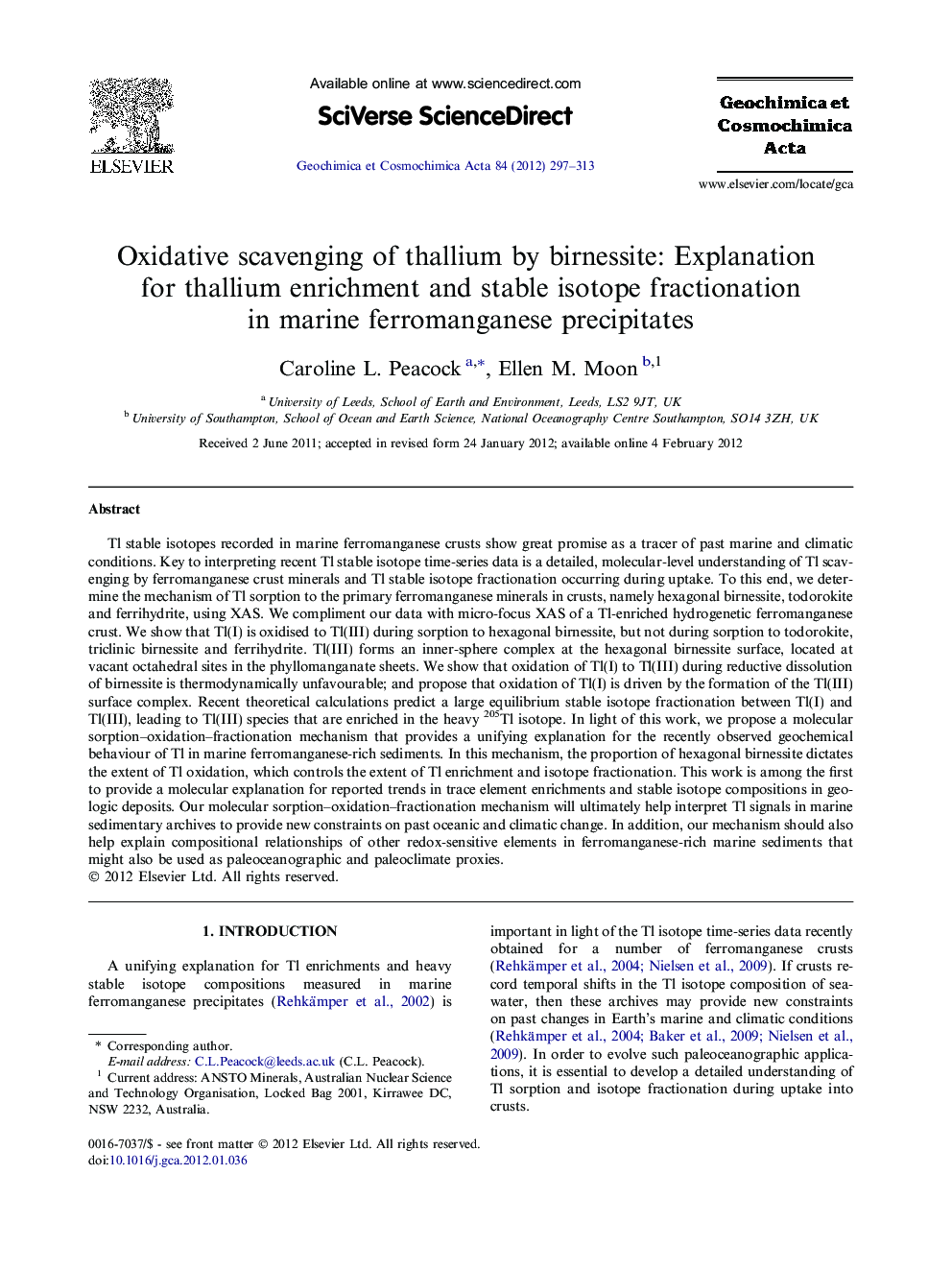| کد مقاله | کد نشریه | سال انتشار | مقاله انگلیسی | نسخه تمام متن |
|---|---|---|---|---|
| 4702950 | 1638073 | 2012 | 17 صفحه PDF | دانلود رایگان |

Tl stable isotopes recorded in marine ferromanganese crusts show great promise as a tracer of past marine and climatic conditions. Key to interpreting recent Tl stable isotope time-series data is a detailed, molecular-level understanding of Tl scavenging by ferromanganese crust minerals and Tl stable isotope fractionation occurring during uptake. To this end, we determine the mechanism of Tl sorption to the primary ferromanganese minerals in crusts, namely hexagonal birnessite, todorokite and ferrihydrite, using XAS. We compliment our data with micro-focus XAS of a Tl-enriched hydrogenetic ferromanganese crust. We show that Tl(I) is oxidised to Tl(III) during sorption to hexagonal birnessite, but not during sorption to todorokite, triclinic birnessite and ferrihydrite. Tl(III) forms an inner-sphere complex at the hexagonal birnessite surface, located at vacant octahedral sites in the phyllomanganate sheets. We show that oxidation of Tl(I) to Tl(III) during reductive dissolution of birnessite is thermodynamically unfavourable; and propose that oxidation of Tl(I) is driven by the formation of the Tl(III) surface complex. Recent theoretical calculations predict a large equilibrium stable isotope fractionation between Tl(I) and Tl(III), leading to Tl(III) species that are enriched in the heavy 205Tl isotope. In light of this work, we propose a molecular sorption–oxidation–fractionation mechanism that provides a unifying explanation for the recently observed geochemical behaviour of Tl in marine ferromanganese-rich sediments. In this mechanism, the proportion of hexagonal birnessite dictates the extent of Tl oxidation, which controls the extent of Tl enrichment and isotope fractionation. This work is among the first to provide a molecular explanation for reported trends in trace element enrichments and stable isotope compositions in geologic deposits. Our molecular sorption–oxidation–fractionation mechanism will ultimately help interpret Tl signals in marine sedimentary archives to provide new constraints on past oceanic and climatic change. In addition, our mechanism should also help explain compositional relationships of other redox-sensitive elements in ferromanganese-rich marine sediments that might also be used as paleoceanographic and paleoclimate proxies.
Journal: Geochimica et Cosmochimica Acta - Volume 84, 1 May 2012, Pages 297–313